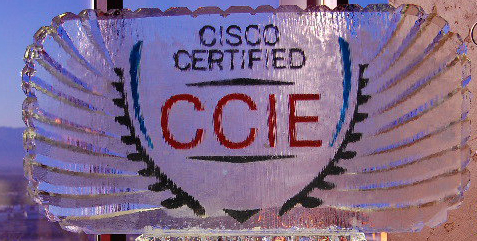
There’s a lot of work that’s been done recently to bring the CCIE up to modern network standards. Yusuf and his team are working hard to incorporate new concepts into the written exam. Candidates are broadening their horizons and picking up new ideas as they learn about industry stalwarts like OSPF and spanning tree. But the biggest challenge out there is incorporating the ideas behind software defined networking (SDN) into the exam. I don’t believe that this will ever happen. Here’s why.
Take This Broken Network
If you look at the CCIE and what it’s really testing, the exam is really about troubleshooting and existing network integration. The CCIE introduces and tests on concepts like link aggregation, routing protocol redistribution, and network service implementation. These are things that professionals are expected to do when they walk in the door, either as a consultant or as someone advising on the incorporation of a new network.
The CCIE doesn’t deal with the design of a network from the ground up. It doesn’t task someone with coming up with the implementation of a greenfield network from scratch. The CCIE exam, especially the lab component, only tests a candidate on their ability to work on something that has already exists. That’s been one of the biggest criticisms of the CCIE for a very long time. Since the knowledge level of a CCIE is at the highest level, they are often drafted to design networks rather than implementing them.
That’s the reason why the CCDE was created. CCDEs create networks from nothing. Their coursework focuses on taking requirements and making a network out of it. That’s why their practical exam focuses less on command lines and more on product knowledge and implementation details. The CCDE is where people that build networks prove they know their trade.
The Road You Must Design For
When you look at the concepts behind SDN, it’s not really built for troubleshooting and implementation without thought. Yes, automation does help implementation. Orchestration helps new devices configure themselves on the fly. API access allows us to pull all kinds of useful information out of the network for the purposes of troubleshooting and management. But each and every one of these things is not in the domain of the CCIE.
Can SDN solve the thorny issues behind redistributing EIGRP into OSPF? How about creating Multiple Spanning Tree instances for odd numbered VLANs? Will SDN finally help me figure out how to implement Frame Relay Traffic Shaping without screwing up the QoS policies? The answer to almost every one of these questions is no.
SDNs major advantages can only be realized with forethought and guidelines. Orchestration and automation make sense when implemented in pods or with new greenfield deployments. Once they have been tested and proven, these concepts can be spread across the entire network and used to ease design woes.
Does it make more sense to start using Ansible and Jinja at the beginning? Or halfway through a deployment? Would you prefer to create Python scripts to poll against APIs after you’ve implemented a different network monitoring system (NMS)? Or would it make more sense to do it right from the start?
CCIEs may see SDN in practice as they start using things like APIC-EM to roll out polices in the network, but CCDEs are the real SDN gatekeepers. They alone can make the decisions to incorporate these ideas from the very beginning to leverage capabilities to ease deployment and make troubleshooting easier. Even though CCIEs won’t see SDN, they will reap the benefits from it being baked in to everything they do.
Tom’s Take
Rather than asking when the CCIE is going to get SDN-ified, a better question would be “Should the CCIE worry?” The answer, as explained above, is no. SDN isn’t something that a CCIE needs to study for. CCDEs, on the other hand, will be hugely impacted by SDN and it will make a big difference to them in the long run. Rather than forcing CCIEs into a niche role that they aren’t necessarily suited for, we should instead let them do what they do best. We should incorporate SDN concepts into the CCDE and let them do what they do best and make the network a better place for CCIEs. Everyone will be better in the long run.


As a CCIE trainee i disagree with you. I think you should know what sdn is and how it work, Because you will have to troubleshoot it one day or have hybrid network, and you will need to know why it’s done this way and what you could manually modify or not. I would not be surprised to see an ACI network in the DC CCIE, or an APIC-EM on the RS.
Pingback: Worth Reading: Why there won't ever be a CCIE SDN - 'net work
Good one..Informative article thanks for sharing waiting for next one